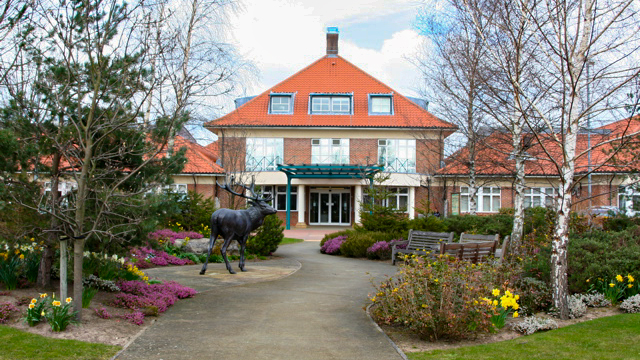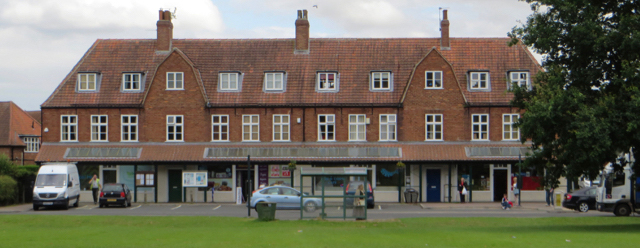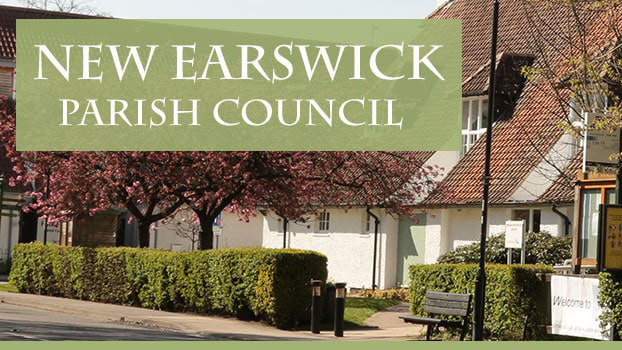
New Earswick
York, United Kingdom
A model village north of York, founded by Joseph Rowntree.
| Garden City Type: | Mixed (housing association / municipality / other) |
| Country: | United Kingdom |
| City: | York |
| Years of construction: |
1902 Start construction
|
| Initiator/client: | Joseph Rowntree |
| Architect or related: |
Raymond Unwin Sir Raymond Unwin (1863- 1940) was a prominent and influential English engineer, architect and town planner, with an emphasis on improvements in working class housing. He and Parker later were the head consulting architects for Letchworth and Hampstead.
Barry Parker Richard Barry Parker (1867 - 1947) was an |
| Heritage status: | Yes |
| Explanation: | New Earswick was designated as a conservation area in 1991 by the City of York Council and includes practically all of the original garden village. |
| General condition of Garden City: | Good condition |
General description
New Earswick, north of York, was founded by Joseph Rowntree, a Quaker businessman, social reformer and philanthropist. His son, Seebohm Rowntree, was a pioneering social researcher who undertook one of the country’s first investigations into poverty. In 1901 he published Poverty: a study of town life in 1901. As a result, Joseph Rowntree became convinced that it must be possible to provide better housing for people on low incomes.
Rowntree bought 150 acres of land on the river Foss, near the village of Earswick, and commissioned Raymond Unwin and Barry Parker to produce a plan for a new garden village.
The first houses were designed between 1902 and 1904 by Unwin, after which the Joseph Rowntree Village Trust (now the Joseph Rowntree Housing Trust) was established to continue building and manage the new village. Houses were to be let at affordable rents, but would still generate a limited return.
In 1902 a clay pit and brick works were established south of New Earswick to supply bricks and roof tiles for the growing village. Production continued until the end of 1933, when the works were closed down and the buildings and machinery dismantled. It is now a nature reserve.
 New Earswick shops (Paul Harrop/Wikimedia Commons, 2023)
New Earswick shops (Paul Harrop/Wikimedia Commons, 2023)
Architecture / Urban planning
The gently curving streets follow the course of the river Foss. New Earswick expanded from the original master plan with a series of expansions, which are in vein of the original plan of Parker and Unwin.
The Trust Deed of the Joseph Rowntree Village Trust, which was set up in 1904 to build and manage New Earswick, safeguarded low-density building (limited to ten houses per acre) and generous open green space. The Arts and Crafts influence on the design of the houses is clear; the gardens of each home had two fruit trees. All the grass verges were planted with trees after which almost all the roads are named: Chestnut Grove, Rowan Place and Lime Tree Avenue for instance.
Also built were primary and secondary schools, a local community centre (the Folk Hall), recreational facilities (such as a swimming pool, tennis courts, and football, rugby and cricket pitches), and a church (the Anglican church of St Andrew's).
Residents and the Community
Unlike other villages founded by industrialists (such as Port Sunlight and Bournville), New Earswick was not designed specifically for the workforce of the nearby Joseph Rowntree Cocoa Works. Rowntree built New Earswick for all people on low incomes, which also included staff working in his factory.
Due to their Quaker beliefs, the Rowntree family decreed there would not be a pub in the village. There never was been, though the Sports Club obtained a drinks licence in the 1980s.
New Earswick now has about 2.700 inhabitants.
Sources
- Website URL
- Website URL
- Website URL
Arts and Crafts Tours: New Earswick – An Interesting Experiment Near York
- Website URL









